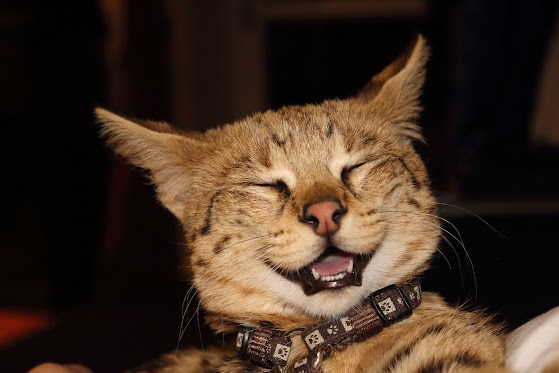Savannah cat - Creature Companion
Savannah cats are a domestic cat breed that was developed in the 1980s. They are a wildcat-like appearance with expressive eyes and dark tear stains. They have held the Guinness Book World Record since 2006 for being the world's largest domestic cat. They don't require special care. For routine feline health maintenance, they visit their regular veterinarian.
The breed standard requires all traits to be akin to the African Serval. The breed's goal is to produce a wild, yet well-rounded breed that can be used as an alternative to exotic pets. It is easy to mistake Bengal Cats for Savannah Cat due to their poor bloodlines.
- Lifespan: 12-20 years
- Weight: 12-25 pounds
- Exercise: High
- Hypoallergenic: No
Exercise is necessary because the Energy Level for this breed is very high. Socialization and exercise are essential parts of a kitten's development into adulthood. Positive reinforcement and exposure to friendly environments are the best for your kitten's development.
High intelligence and naturally curious. They are best suited for active, dedicated owners because of their intelligence, curiosity, and high energy requirements.
Temperament is exceptional when properly trained. Some would call it the feline version of a dog. They are ideal companions for owners who don't want to have to deal with additional canine needs but still want an active, engaged pet. They are open to social interaction. If left alone, they will pout. Throughout their lives, they remain kitten-like. Loving and loyal to their immediate family. Although they may be hesitant to meet strangers, they will soon become comfortable with them and show curiosity about others. They make great companions for loyal owners who are intelligent, loyal, and eager to get involved. They are able to understand simple commands to more complex ones.
Ears should be similar to those of an African Serval cat. African Serval cats have the largest ears of all cats and the largest ears relative to the head size of any cat. As a result, the ears of the Savannah cat are remarkably large and set high on the head. The ears are wide and have a deep base. The ears should be straight and their ends should be rounded. The outer base of the ear should start no lower than eye level, but it can be held higher. The inner base of the ears is placed close to the top of the head, ideally, parallel vertical lines can be drawn from the inner corner of the eyes to the inner base of the ears.
Savannah cats have inherited the "ocelli" marking behind the ear that is used to scare away predators. Ocelli markings can be found throughout nature, such as the wings of butterflies, the ears of most wild cats, and even tabby cats. Serval cats have "ocelli" markings behind their ears which are high-contrast markings that are thought to scare away predators by mimicking the eyes of their enemies. Savannah cats often have a dull Ocelli marking with less contrast. The high contrast of black is missing from the white color scheme. Black with white is considered desirable, but having fewer contrasting colors (brown with black, brown with brown) is not a flaw.
Head should be a modified wide wedge with a rounded shape. The head should be wider than it is long. The front view of the face should have a distinctive, symmetrical triangular shape. The nose is long with a small chin. It is preferred that the head be marked "L L" rather than the "M" mark, although this is not in the breed standard.
Eyes should be of medium size and slightly hooded below the browbone. The upper part of the eye resembles a boomerang, positioned at a precise angle so that the corner of the eye curves down from the line of the nose. The lower half of the eye is almond-shaped. The eyes are moderately deep, low on the forehead, and in line with facial symmetry. There are tear spots between and between the eyes and nose. All eye colors are allowed and they are independent of coat color.
Color of the Savannah cat is brown, silver, black, and smoke. Acceptable colors are ones that imitate the African Serval. The most popular African serval color is a buttery yellow with solid jet-black spots. Gold is brown in color, so it is correctly recorded as Brown Spotted Brindle (BST).
For more information visit our website Creature Companion.




Comments
Post a Comment